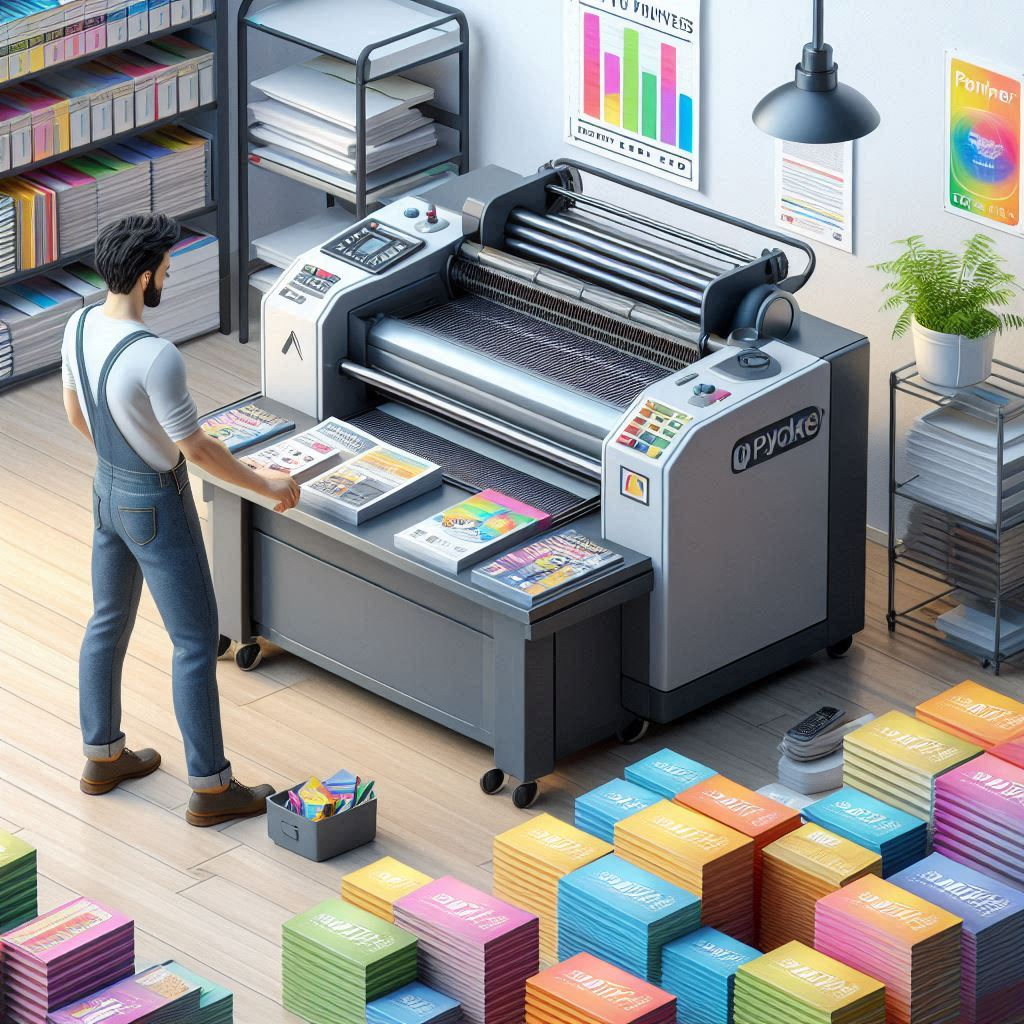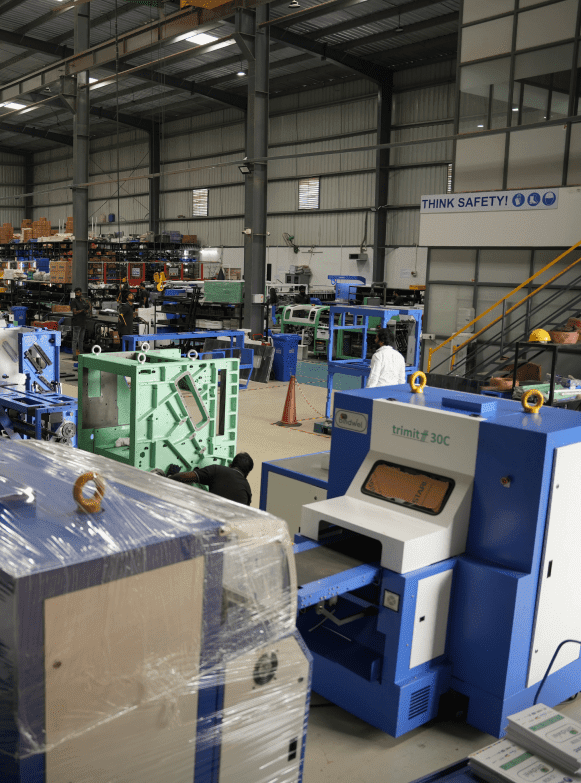In a recent webinar, the importance of understanding the ongoing transformations in the book printing and publishing industry was emphasized. This session was not a masterclass but a co-learning seminar, recognizing that the journey toward mastering short-run digital book printing is still ongoing. The landscape of book distribution, printing, and personalization has evolved significantly, presenting new opportunities and challenges for industry stakeholders.
The Changing Dynamics of the Book Printing Industry

The past decade has seen a dramatic shift in the book printing and publishing industry, particularly in India, one of the largest consumers of books. The discussions primarily focused on the market opportunities, current trends, and the critical dos and don’ts of bookbinding in the digital age. To succeed in this evolving landscape, it is essential to understand market needs, customer requirements, and behavioral patterns.
Traditionally, book printers have focused on fulfilling orders without delving into the reasons behind the types of jobs being commissioned. However, to thrive, it’s crucial to transition from being mere service providers to becoming advisors and consultants for customers. The trend toward short-run digital book printing reflects the changing dynamics of book distribution, where personalization and reduced inventories are becoming increasingly important.
The Rise of E-Commerce and On-Demand Printing

One of the most significant trends influencing the book publishing industry is the rise of e-commerce. In a conversation with Mr. Thomas Abraham, Managing Director of Hachette India, it was revealed that the distribution model has shifted drastically, with Amazon and Flipkart dominating the market. In the USA, around 70% of books are distributed through e-commerce platforms. This trend underscores the growing influence of e-commerce on the industry, where on-demand printing is becoming the norm.
For instance, a book purchased on Amazon might be printed only after the order is placed, reflecting the shift towards a model where books are no longer stocked in large quantities but printed and shipped on demand. This approach reduces inventory costs and ensures that books are always available for purchase without the need for large physical stockpiles.
Self-Publishing and Personalization: New Frontiers

Self-publishing has democratized the process of becoming an author, allowing individuals to write and publish books on various topics, from specialized subjects to general interest stories. In India, self-publishing has gained significant traction, with companies like White Falcon and Notion Press leading the way. Traditional publishers, such as Penguin Random House, have also entered the self-publishing space, recognizing its potential.
A notable trend in self-publishing is the customization of content. For example, Wonderbly’s personalized book “Lost My Name” allows children to engage in tasks that reveal the letters of their name, creating a unique and personalized story. This level of personalization, which was unimaginable a few years ago, is now a highly demanded model in the industry, with millions of copies sold worldwide.
Educational Book Printing: The Demand for Customization

The educational sector in India, the largest in the world, presents a significant opportunity for customized printing. With 1.5 million schools and 265 million students, there is a growing demand for personalized learning materials. For example, workbooks tailored to address a child’s strengths and weaknesses in subjects like math or language are becoming increasingly popular. This level of personalization, known as segmented or group personalization, allows for customization based on the needs of different student groups.
Sustainability and Efficiency in Short-Run Printing
Sustainability is a crucial consideration in short-run printing, as it minimizes waste and prevents overproduction. Data-driven printing, integrated with e-commerce, incorporates anti-piracy measures and ensures constant availability of books in the market. The ability to print on demand, whether for short or long runs, is essential for maintaining efficient inventories and reducing excess stock.
Short-run printing, defined as runs of 50 to 1,000 books, is ideal for self-publishing, reprints, niche titles, and regional textbooks. In some cases, supplementary print runs may be required, which can be served by micro runs—small batches of 10 to 20 books. The “one book model,” where a single book is printed on demand, is also gaining traction, particularly for personalized and limited-edition books.
Challenges and Considerations in Short-Run Printing

While short-run printing offers numerous benefits, it also presents challenges, particularly in terms of higher per-unit costs. However, these costs should be evaluated from a broader perspective, considering the savings in the value chain, such as reduced inventory and lower risk of obsolescence.
Job changeovers, which can lead to longer setup times and impact quality control, are another challenge. Standardization, especially in paper formats and resources, is crucial for maintaining consistency and reducing costs in short-run digital printing.
Technical Considerations in Short-Run Bookbinding
The technical aspects of short-run bookbinding are critical to ensuring high-quality, consistent results. Here are some key considerations:
- Paper Selection: The choice of paper is crucial in digital printing. Typically, 60-80 GSM papers are used, but highly coated papers can present challenges in binding. It’s essential to test the paper before proceeding with the binding process to avoid issues later on.
- Grain Direction: For perfect binding, the grain direction of the paper should be parallel to the spine. Cross-grain paper can lead to significant issues such as cracking and peeling, which can compromise the durability and appearance of the book.
- Ink Coverage: Ink coverage near the spine should be minimized. Excessive ink can interfere with the adhesion process, particularly when using hot melt adhesives. This can result in poor binding quality and potential durability issues.
- Adhesive Technology: The latest advancements in binding adhesive technology, such as polyolefin-based (PO) adhesives, offer greater flexibility compared to traditional EVA-based adhesives. PO adhesives are particularly effective in handling a wider range of paper types, ensuring a stronger and more durable bind.
- Moisture Control: Proper moisture control is key to avoiding issues like uneven binding and blow-outs. Conducting binding trials for each type of paper can help establish benchmarks and ensure consistent quality across different jobs.
- Spine Preparation: Effective spine preparation is essential for maximizing fiber exposure, which is crucial for the adhesive to bind effectively. Notching the spine can also enhance the binding strength, especially in short-run digital printing.
- Equipment Selection: Choosing the right equipment is vital for handling the demands of digital printing. Equipment should be capable of faster job changeovers, precise thickness measurement, and accurate spine preparation and trimming. This ensures that the binding process is both efficient and capable of producing high-quality results.
The Hybrid Approach: Combining Offset and Digital Printing
The evolution of printing methods has led to the adoption of a hybrid approach that combines offset and digital printing. Offset printing is ideal for large quantities, ensuring consistent quality and a long shelf life, while digital printing is better suited for smaller to medium print runs and market testing. This hybrid approach allows publishers to test new titles with short-run digital printing before transitioning to offset printing for larger editions, optimizing costs and minimizing risk.
Conclusion
The book printing and publishing industry is undergoing significant changes, driven by the rise of e-commerce, the demand for personalization, and the need for sustainable practices. As the industry continues to evolve, stakeholders must adapt to these changes, embracing new technologies and approaches to meet the needs of the market. The possibilities in book printing and publishing today are truly limitless, and the future holds exciting opportunities for those willing to innovate and adapt.
Incorporating the right technical considerations into short-run bookbinding can make a significant difference in the quality and durability of the final product. By carefully managing materials, processes, and equipment, printers can ensure that digitally printed books meet the highest standards, delivering value to both publishers and readers.
👉 Follow Bindwel on social media 📱 and stay updated with the latest trends.
Stay ahead of the curve in the world of bookbinding! Follow Bindwel on Facebook, LinkedIn, Twitter, Instagram and YouTube for the latest industry updates, innovative solutions, and expert tips to optimize your production.
#bindwel #bookbinding #binding #perfectbinding #bookpublishing #bookprinting #publishingindustry #printing #shortrun #longrun #ondemand #books #energy #bookbindingmachines






